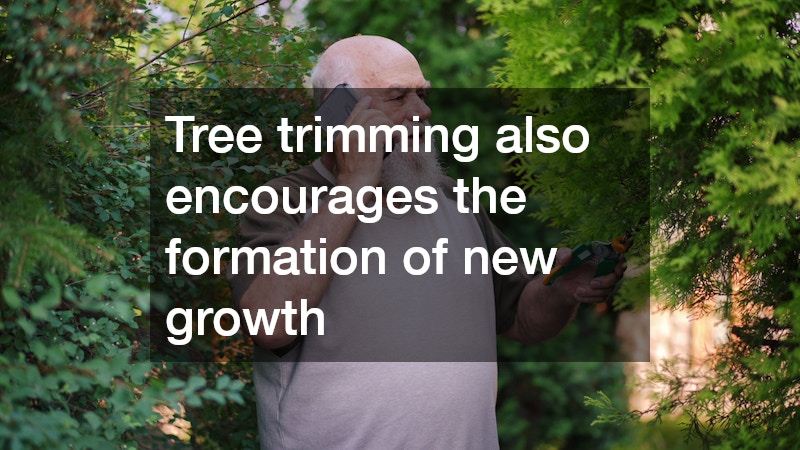Tree trimming is an essential aspect of maintaining healthy trees and enhancing the aesthetics of your landscape. Your local tree service plays a vital role in promoting tree trimming as a routine practice for homeowners. Explore the key reasons why tree trimming is encouraged and common queries surrounding the topic.
The importance of tree trimming cannot be overstated. Regular upkeep not only keeps trees healthy but also ensures that your property remains visually appealing. Trees that are well-maintained can significantly improve the overall appearance of residential and commercial landscapes.
Many homeowners may underestimate the impact of neglecting tree trimming. The consequences of overlooking this maintenance task can lead to unsafe conditions and potential property damage. By understanding why local tree services advocate for trimming, you can make more informed decisions regarding your landscape maintenance.
The Benefits of Tree Trimming
Tree trimming offers numerous advantages, including improved tree health, enhanced growth, and increased property value. Healthy trees provide a range of ecological benefits, such as improved air quality and habitat for wildlife, which contribute positively to the environment.
Regular trimming leads to better sunlight exposure and air circulation, essential factors for optimal growth. This practice reduces competition among branches for resources, promoting more effective photosynthesis and nutrient absorption.
A well-trimmed tree not only looks better but also increases the overall value of your property. Potential buyers often look for homes with well-maintained landscaping, indicating that the property’s upkeep has been prioritized, making tree trimming an essential component of property maintenance.
The Right Time for Tree Trimming
Understanding the optimal timing for tree trimming is crucial for ensuring healthy growth and minimizing damage to the tree. Generally, late winter to early spring is considered the best time to trim, before new growth starts. This timing allows trees to heal before the growing season begins, minimizing stress.
Certain species may have specific timing needs based on their growth patterns and seasonal behaviors. For example, flowering trees may require trimming immediately after they bloom. Timing is essential not only for the health of the tree but also for the aesthetics of your landscape throughout the changing seasons.
Consulting with local tree services can provide you with tailored advice on the optimum trimming schedule for your specific tree species. These professionals consider local climate and environmental factors to recommend the best trimming times, ensuring optimal tree health and growth.
The Impact of Routine Trimming on Tree Health
Regular trimming helps prevent disease, promotes airflow, and encourages stronger growth, thereby extending the life of the tree. Proper cutting techniques remove dead or diseased branches, preventing the spread of illnesses to healthy parts of the tree.
By allowing more light and air to reach the inner branches and leaves, trimming fosters better overall health. Increased light exposure can enhance photosynthesis, resulting in a more robust tree that can withstand pests and diseases more effectively.
Tree trimming also encourages the formation of new growth. By removing older or overgrown branches, energy can be redirected towards producing new shoots, increasing overall vitality and structural integrity, which is crucial for the longevity of the tree.
The Safety Implications of Tree Trimming
Tree trimming can eliminate hazardous branches, reducing the risk of property damage and enhancing safety for your home and surroundings. Dead or overhanging branches pose a significant risk, especially during storms or harsh weather conditions.
Regular maintenance helps identify and address potential hazards before they become a serious issue. A well-trimmed tree is less likely to cause injury or damage to nearby structures, vehicles, or power lines, creating a safer environment for your family and neighbors.
Taking proactive measures with tree trimming can save homeowners from costly repairs and the emotional toll of accidents. Investing in safety through tree maintenance is an essential responsibility for any property owner.
Tree trimming is a crucial investment in the health and safety of your landscape. By understanding the benefits and best practices, you can make informed decisions about the care of your trees and the need for professional intervention. It is essential to recognize that regular trimming not only contributes to the aesthetic appeal but also enhances the longevity and resilience of your trees.
Choosing to work with local tree services for professional trimming ensures that you’re benefiting from expert knowledge and techniques that will provide long-term advantages. Understanding the right timing and necessity of trimming can drastically improve the health of your property.
A proactive approach to tree maintenance leads to a safer, more beautiful, and healthier landscape. Investing in tree trimming is investing in the future of your property. Professional tree trimming is far more than a simple aesthetic service—it’s an essential part of maintaining healthy, safe, and beautiful landscapes. Regular trimming promotes stronger growth, prevents the spread of disease, and reduces the risk of falling branches that can endanger people or property. Beyond safety and health, professional care ensures trees are shaped in a way that complements the surrounding environment, enhancing curb appeal and overall property value. By trusting trained arborists to handle the job, homeowners and business owners alike can preserve the longevity of their trees while enjoying the peace of mind that comes from expert attention and sustainable practices. Don’t hesitate to reach out to local professionals to discuss your tree care needs.



